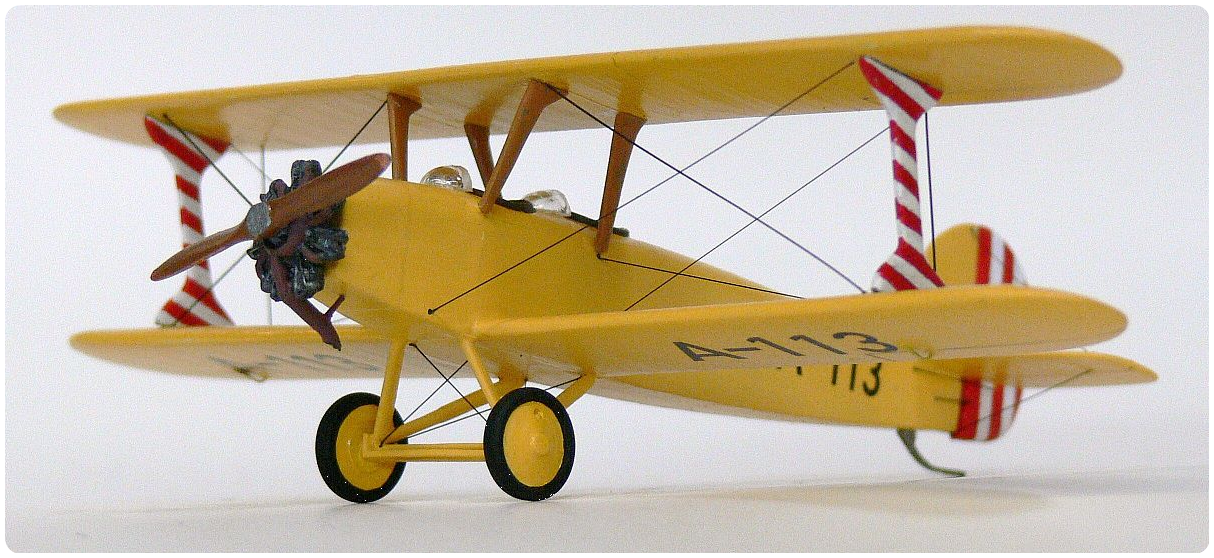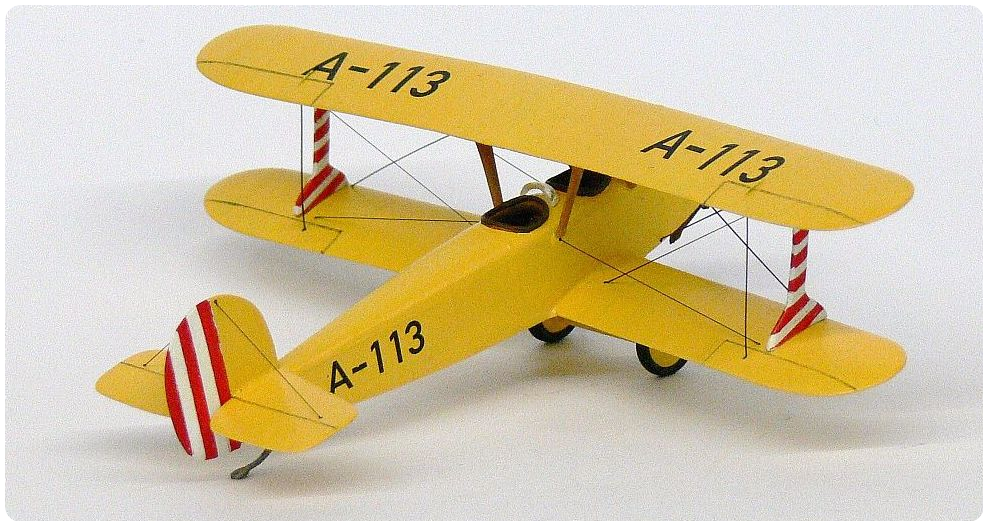Model of the Month May 2017 – Udet U Flamingo

Here we deal with a highly complex story of war and peace, Weimar Republic, allied victories, famous names, and Bavarian industrial policy. We deal with individuals who later were to play an important role in aviation.
Ernst Udet, famous fighter pilot of world war one and aerobatics pilot after the war in 1921 called together ex-military pilots in order to found an aircraft production, although this was strictly prohibited by the Treaty of Versailles. The engineer Hans Herrmann designed the sports airplane U 1, funded by William and Heinz Pohl. In October 1921 they started the Udet Aircraft Construction in Munic and Udet let them use his name as figurehead. The company built many airplanes but soon went broke.
It was at the end of 1924 when they designed a simple and robust trainer bi-plane, named Udet U 12 Flamingo. It was a plywood construction, for a natural fuel flow the tank was in the upper wing. The plywood wings and the tail had light alloy ailerons and rudders stringed with fabric. For training purposes the twin controls could be unlocked by the flight instructor.
The engine was a Siemens & Halske air-cooled seven cylinder rotary engine SH 11 with a performance of 71 kW/96 hp.
The construction of the plane got along fine and the maiden flight took place in April of 1925, with Ernst Udet at the controls. There is a really big difference if you compare the admission of an aircraft and the check flights at that time with the professional procedures of today: during the maiden flight Udet did all kinds of aerobatic maneuvers at low level and landed the plane with the engine shut down. He was perfectly satisfied with the plane and took part in an airshow with it five days later.
The plane sold well and improvements were continuously made. The plane was also built under licence in Hungary. In spite of this success the Udet company did not well financially and went bankrupt in 1926. The State of Bavaria established a rescue company called BFW which turned out to be the forerunner of BMW and the successor of the Bavarian Otto- and Albatros Company. This company was
 to build the Flamingo in greater numbers for the (at that time) secret flight training schools which were needed for the rearmament. In the city of Bamberg there was another company which built aircraft: the Messerschmitt GmbH. At that time Messerschmitt was a young but unknown design engineer. He became the chief engineer of the BFW and in 1938 he founded his own company: the Messerschmitt AG.
to build the Flamingo in greater numbers for the (at that time) secret flight training schools which were needed for the rearmament. In the city of Bamberg there was another company which built aircraft: the Messerschmitt GmbH. At that time Messerschmitt was a young but unknown design engineer. He became the chief engineer of the BFW and in 1938 he founded his own company: the Messerschmitt AG.
But the Flamingo was a big success and Udet made this plane well known due to his outstanding aeronautical abilities and the bright red color of the plane.
Technical Specifications
wing span 10,00 m, length 7,50 m, height 2,80 m, basic weight 500 kg, take-off weight 800 kg, maximum speed 140 km/h, landing speed 75 km/h, service ceiling 3300 m, endurance 3,5 h, engine: one Siemens & Halske SH 11, seven cylinder aircooled rotary engine with 71 kW/96 hp
